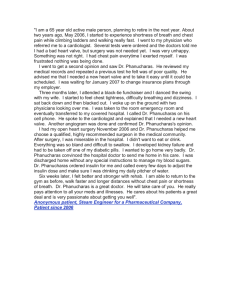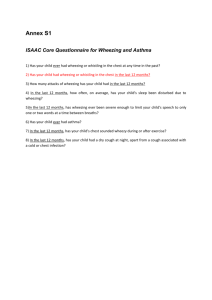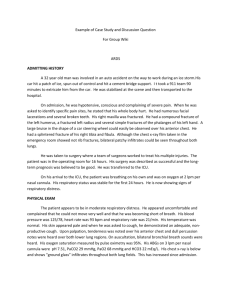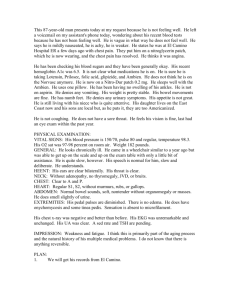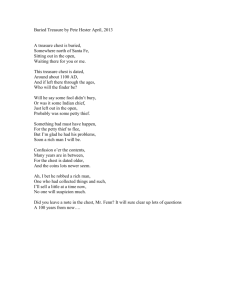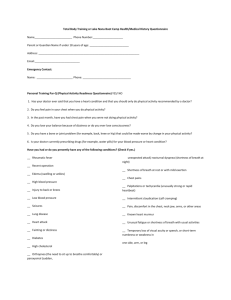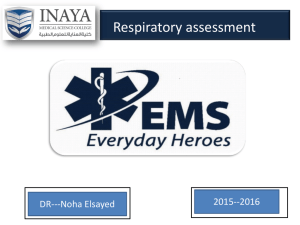DOC - Human Gross Anatomy at the Pennsylvania State University
advertisement
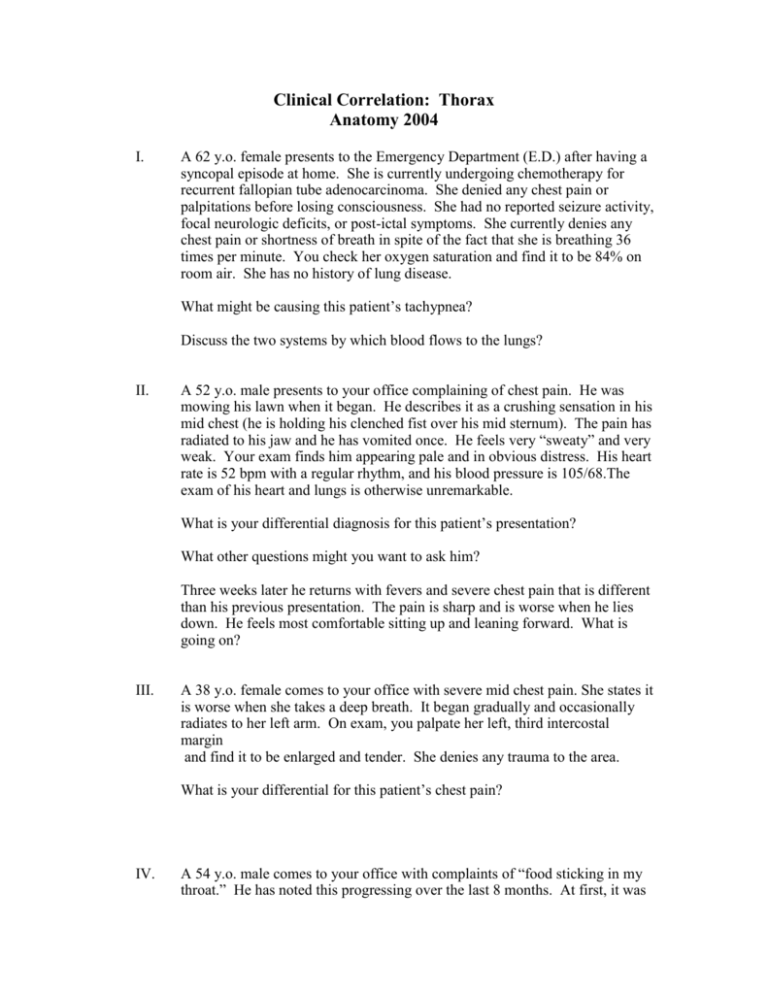
Clinical Correlation: Thorax Anatomy 2004 I. A 62 y.o. female presents to the Emergency Department (E.D.) after having a syncopal episode at home. She is currently undergoing chemotherapy for recurrent fallopian tube adenocarcinoma. She denied any chest pain or palpitations before losing consciousness. She had no reported seizure activity, focal neurologic deficits, or post-ictal symptoms. She currently denies any chest pain or shortness of breath in spite of the fact that she is breathing 36 times per minute. You check her oxygen saturation and find it to be 84% on room air. She has no history of lung disease. What might be causing this patient’s tachypnea? Discuss the two systems by which blood flows to the lungs? II. A 52 y.o. male presents to your office complaining of chest pain. He was mowing his lawn when it began. He describes it as a crushing sensation in his mid chest (he is holding his clenched fist over his mid sternum). The pain has radiated to his jaw and he has vomited once. He feels very “sweaty” and very weak. Your exam finds him appearing pale and in obvious distress. His heart rate is 52 bpm with a regular rhythm, and his blood pressure is 105/68.The exam of his heart and lungs is otherwise unremarkable. What is your differential diagnosis for this patient’s presentation? What other questions might you want to ask him? Three weeks later he returns with fevers and severe chest pain that is different than his previous presentation. The pain is sharp and is worse when he lies down. He feels most comfortable sitting up and leaning forward. What is going on? III. A 38 y.o. female comes to your office with severe mid chest pain. She states it is worse when she takes a deep breath. It began gradually and occasionally radiates to her left arm. On exam, you palpate her left, third intercostal margin and find it to be enlarged and tender. She denies any trauma to the area. What is your differential for this patient’s chest pain? IV. A 54 y.o. male comes to your office with complaints of “food sticking in my throat.” He has noted this progressing over the last 8 months. At first, it was just solid food but now he is having difficulty with liquids. He has even regurgitated some foods lately, shortly after attempting to eat them. His appetite is poor and he is losing weight. He points to his mid sternum as to where the food is getting caught. His exam shows a cachectic male but otherwise it is unremarkable. What, anatomically, would cause someone to have dysphagia? What would you want to ask this patient concerning his social history and his review of systems? V. A 74 y.o. female comes into your office with complaints of shortness of breath. She reports no cough, chest pain or wheezing. She is not a smoker. On exam, her lungs are clear but there is dullness at her left lung base extending approximately half way up her lung field. What would cause dullness at the left lung base? How would you evaluate this finding? VI. An 18 y.o. college student comes into the infirmary with complaints of “wheezing.” He states that this happened once in grade school but not since. He takes no medications. On exam, he has moderate air movement into his lungs. His expiratory phase is prolonged and during expiration he is wheezing. What is this patient’s diagnosis? How would you treat this? How does this differ from emphysema?


